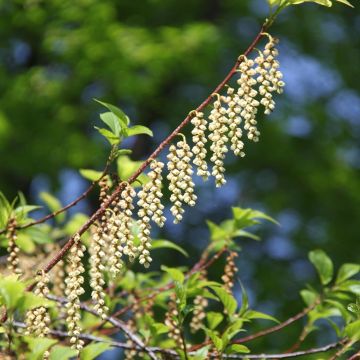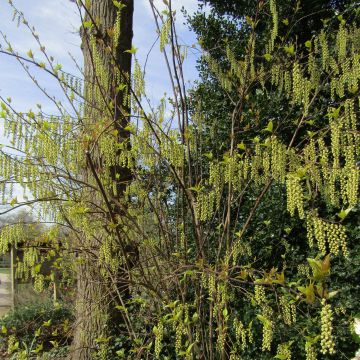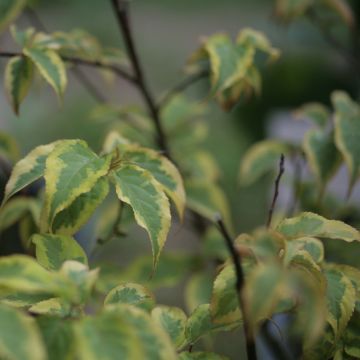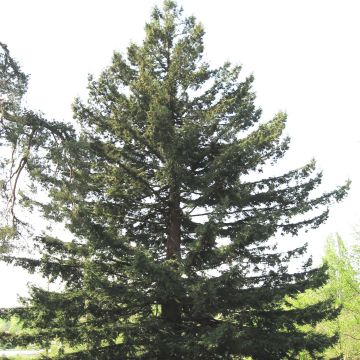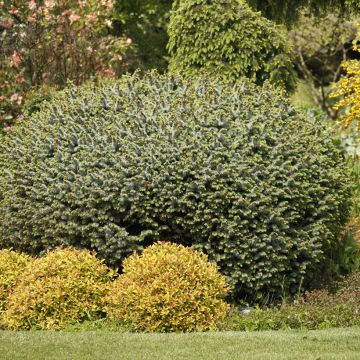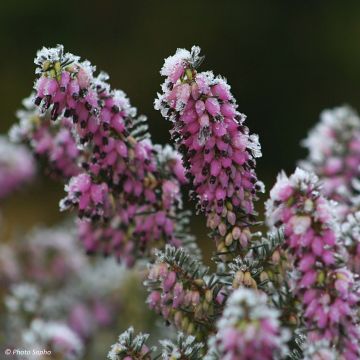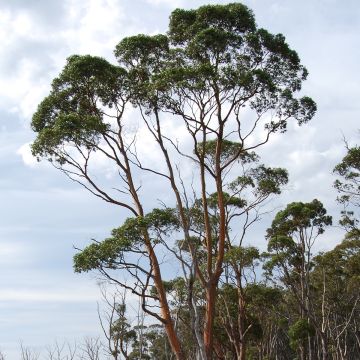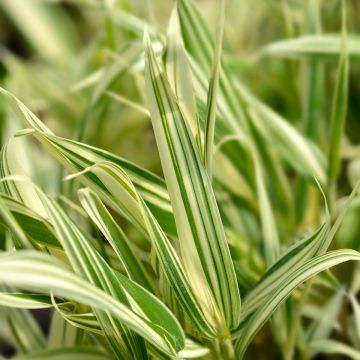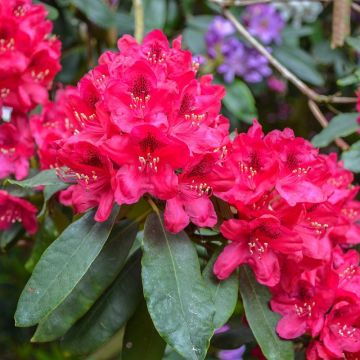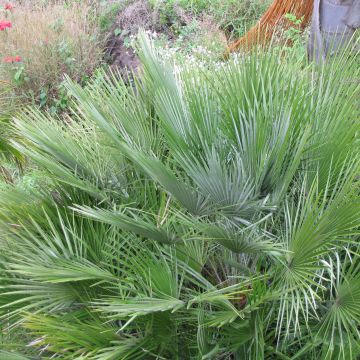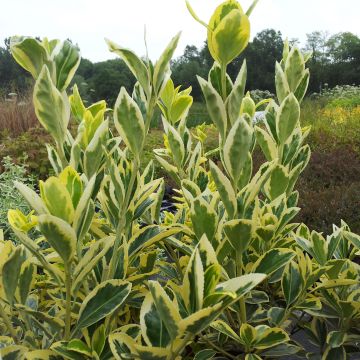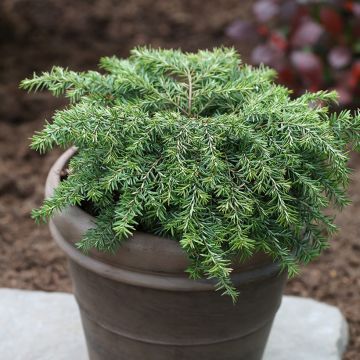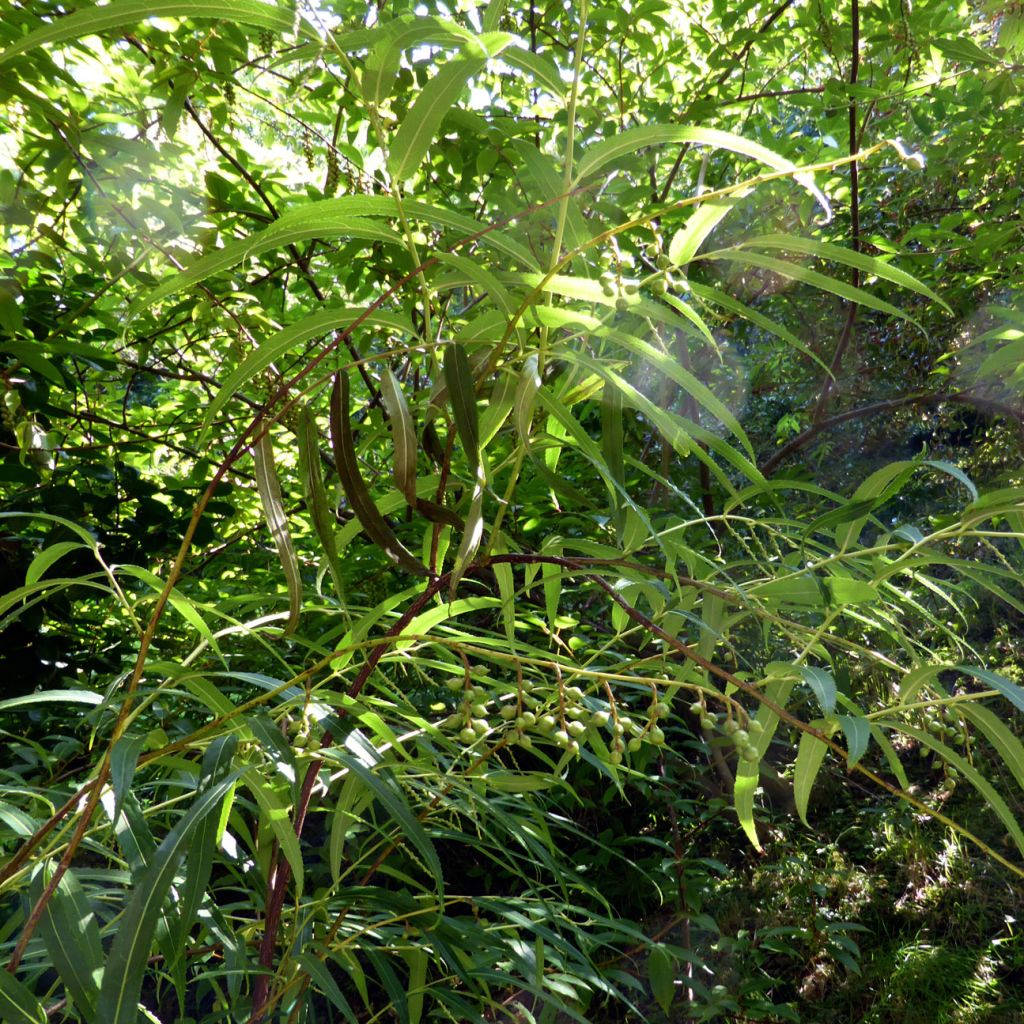

Stachyurus salicifolius - Stachyurus à feuilles de saule
Stachyurus salicifolius
Stachyurus salicifolius
This plant carries a 24 months recovery warranty
More information
We guarantee the quality of our plants for a full growing cycle, and will replace at our expense any plant that fails to recover under normal climatic and planting conditions.
From €5.90 for pickup delivery and €6.90 for home delivery
Express home delivery from €8.90.
Does this plant fit my garden?
Set up your Plantfit profile →
Description
Stachyurus salicifolius is an evergreen bush from China that thrives in acidic soil and is very hardy. It is both elegant, unique, and relatively unknown. It has a graceful habit, with red young shoots and beautiful foliage reminiscent of willow leaves. It produces abundant flowering in long pendulous clusters, ranging from cream to pale yellow, which is particularly welcome after winter. It looks stunning when allowed to grow freely, but its long stems also make it suitable for training along a wall or small fence, for example.
Stachyurus salicifolius belongs to the Stachyuraceae family, which includes only 6 species. Rare in cultivation, it is native to the Chinese provinces of Guangdong, Guizhou, Sichuan, and the northeastern Yunnan. It is a bush with a very flexible, airy, and slightly spreading habit. Its growth is quite fast, reaching approximately 2m (7ft) in height and 1.70m (6ft) in width at maturity. The foliage is evergreen, composed of long leaves measuring 10 to 15cm (4 to 6in), very narrow, and ending in a pointed tip with toothed edges. The leaves emerge orange and turn bright green in summer, blending with the pinkish juvenile leaves in winter. Its flowering is early and abundant, occurring between March and April. It appears on the red wood as reddish buds that open into small creamy-white to pale yellow bell-shaped flowers, grouped in pendulous clusters measuring 10-15cm (4-6in) in length. It displays delicate, gracefully arching stems that are a beautiful reddish-purple colour when young.
Stachyurus salicifolius is rarely used in gardens, even in regions with non-alkaline soils where rhododendrons, hydrangeas, ceanothus, or camellias thrive. Although more discreet, it is unquestionably elegant and highly ornamental throughout the year. Its generous early flowering and ever-changing appearance provide an ever-renewing spectacle. It can be used as a solitary plant, in groups of three, or in mass plantings with other acid-loving plants. It is an architectural plant that fits well in contemporary, Japanese-inspired, or even wild gardens. It stands out against a backdrop of red heathers (Erica carnea, Erica darleyensis) and Andromeda glaucophylla, accompanied by dwarf rhododendrons and loropetalums.
Report an error about the product description
Stachyurus salicifolius in pictures
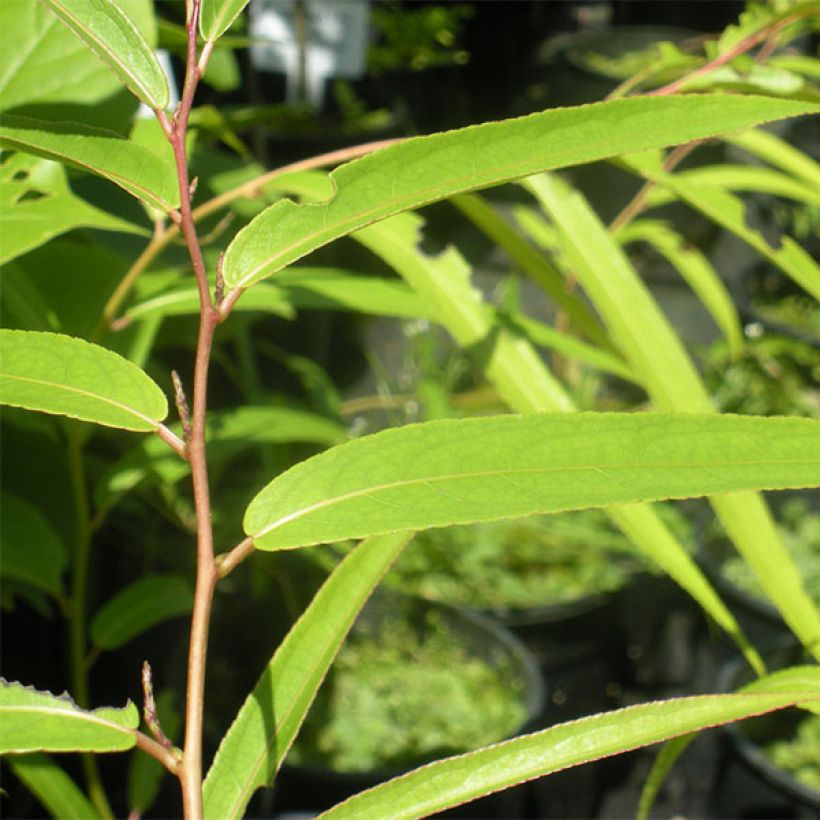

Plant habit
Flowering
Foliage
Botanical data
Stachyurus
salicifolius
Stachyuraceae
China
Other Stachyurus
Planting and care
Plant Stachyurus salicifolius in a position sheltered from cold winds, in morning sun or partial shade all day. It will not tolerate an alkaline soil, so enrich your planting hole with ericaceous soil and well-rotted compost as it likes rich and moist soils. Add some sand and gravel for efficient drainage. Prune in spring after flowering: lighten the structure of the bush by removing branches that cross in the centre, and getting rid of dead branches. Be careful with excessive pruning that will unbalance its elegant habit.
Planting period
Intended location
Care
This item has not been reviewed yet - be the first to leave a review about it.
Evergreen shrubs
Haven't found what you were looking for?
Hardiness is the lowest winter temperature a plant can endure without suffering serious damage or even dying. However, hardiness is affected by location (a sheltered area, such as a patio), protection (winter cover) and soil type (hardiness is improved by well-drained soil).

Photo Sharing Terms & Conditions
In order to encourage gardeners to interact and share their experiences, Promesse de fleurs offers various media enabling content to be uploaded onto its Site - in particular via the ‘Photo sharing’ module.
The User agrees to refrain from:
- Posting any content that is illegal, prejudicial, insulting, racist, inciteful to hatred, revisionist, contrary to public decency, that infringes on privacy or on the privacy rights of third parties, in particular the publicity rights of persons and goods, intellectual property rights, or the right to privacy.
- Submitting content on behalf of a third party;
- Impersonate the identity of a third party and/or publish any personal information about a third party;
In general, the User undertakes to refrain from any unethical behaviour.
All Content (in particular text, comments, files, images, photos, videos, creative works, etc.), which may be subject to property or intellectual property rights, image or other private rights, shall remain the property of the User, subject to the limited rights granted by the terms of the licence granted by Promesse de fleurs as stated below. Users are at liberty to publish or not to publish such Content on the Site, notably via the ‘Photo Sharing’ facility, and accept that this Content shall be made public and freely accessible, notably on the Internet.
Users further acknowledge, undertake to have ,and guarantee that they hold all necessary rights and permissions to publish such material on the Site, in particular with regard to the legislation in force pertaining to any privacy, property, intellectual property, image, or contractual rights, or rights of any other nature. By publishing such Content on the Site, Users acknowledge accepting full liability as publishers of the Content within the meaning of the law, and grant Promesse de fleurs, free of charge, an inclusive, worldwide licence for the said Content for the entire duration of its publication, including all reproduction, representation, up/downloading, displaying, performing, transmission, and storage rights.
Users also grant permission for their name to be linked to the Content and accept that this link may not always be made available.
By engaging in posting material, Users consent to their Content becoming automatically accessible on the Internet, in particular on other sites and/or blogs and/or web pages of the Promesse de fleurs site, including in particular social pages and the Promesse de fleurs catalogue.
Users may secure the removal of entrusted content free of charge by issuing a simple request via our contact form.
The flowering period indicated on our website applies to countries and regions located in USDA zone 8 (France, the United Kingdom, Ireland, the Netherlands, etc.)
It will vary according to where you live:
- In zones 9 to 10 (Italy, Spain, Greece, etc.), flowering will occur about 2 to 4 weeks earlier.
- In zones 6 to 7 (Germany, Poland, Slovenia, and lower mountainous regions), flowering will be delayed by 2 to 3 weeks.
- In zone 5 (Central Europe, Scandinavia), blooming will be delayed by 3 to 5 weeks.
In temperate climates, pruning of spring-flowering shrubs (forsythia, spireas, etc.) should be done just after flowering.
Pruning of summer-flowering shrubs (Indian Lilac, Perovskia, etc.) can be done in winter or spring.
In cold regions as well as with frost-sensitive plants, avoid pruning too early when severe frosts may still occur.
The planting period indicated on our website applies to countries and regions located in USDA zone 8 (France, United Kingdom, Ireland, Netherlands).
It will vary according to where you live:
- In Mediterranean zones (Marseille, Madrid, Milan, etc.), autumn and winter are the best planting periods.
- In continental zones (Strasbourg, Munich, Vienna, etc.), delay planting by 2 to 3 weeks in spring and bring it forward by 2 to 4 weeks in autumn.
- In mountainous regions (the Alps, Pyrenees, Carpathians, etc.), it is best to plant in late spring (May-June) or late summer (August-September).
The harvesting period indicated on our website applies to countries and regions in USDA zone 8 (France, England, Ireland, the Netherlands).
In colder areas (Scandinavia, Poland, Austria...) fruit and vegetable harvests are likely to be delayed by 3-4 weeks.
In warmer areas (Italy, Spain, Greece, etc.), harvesting will probably take place earlier, depending on weather conditions.
The sowing periods indicated on our website apply to countries and regions within USDA Zone 8 (France, UK, Ireland, Netherlands).
In colder areas (Scandinavia, Poland, Austria...), delay any outdoor sowing by 3-4 weeks, or sow under glass.
In warmer climes (Italy, Spain, Greece, etc.), bring outdoor sowing forward by a few weeks.

































